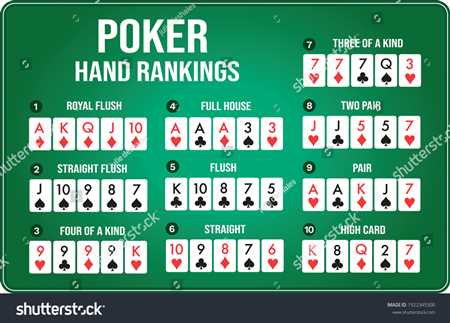

The realm of competitive card play offers an exhilarating blend of strategy, psychology, and chance. Aspiring players often find themselves captivated by the intricacies of the game, eager to delve into the fundamentals and elevate their skills. Unlocking the secrets of this thrilling pursuit not only enhances one’s gameplay but also provides the opportunity to engage in spirited competition with others.
As you embark on this journey, it’s vital to grasp the essential principles that underpin success in this intellectual battle. Understanding the nuances of tactics, probability, and the art of reading opponents can lead you to develop a formidable edge over fellow contenders. With the right mindset and preparation, even novices can begin their ascent in this captivating world.
Whether you aspire to enjoy leisurely games with friends or set your sights on the competitive circuit, cultivating a solid understanding of the game’s mechanics and strategies is crucial. The following sections will equip you with valuable insights and practical approaches, paving the way for future accomplishments in this captivating endeavor.
Grasping the foundational principles of this engaging card game is essential for those looking to enhance their skills. It involves strategic thinking, psychological elements, and a blend of chance that captivates players worldwide. The gameplay revolves around community cards, individual strategies, and the interactions between participants at the table.
Each round begins with two players placing mandatory bets, known as blinds. Following this, players are dealt two private cards and must use their judgment to determine their best course of action. The game unfolds through a series of betting rounds accompanied by the revelation of community cards, which are shared among players. Successful play hinges not only on the strength of one’s own hand but also on reading opponents and understanding the flow of the game.
Hands Ranking: Knowing the hierarchy of hands is crucial, as it dictates winning chances in a showdown. Familiarize yourself with combinations, ranging from high card to royal flush.
Betting Strategies: Strategies can vary significantly. Skilled players carefully consider their position at the table, the actions of their opponents, and adjust their approaches. Reading the table and making calculated decisions are the hallmarks of a successful competitor.
Understanding the essential principles and framework of this card game is crucial for success. The mechanics involve various stages that contribute to the overall complexity and excitement, making it imperative for participants to familiarize themselves with these elements for effective play.
The game is typically played with a standard deck of 52 cards, and it accommodates anywhere from two to ten players. Each participant aims to form the highest-ranking hand, utilizing their own cards in conjunction with community cards dealt on the table.
Mastering these foundational aspects of the game will enhance your overall understanding and improve your performance at the table.
Having a strong grasp of essential vocabulary is crucial for any aspiring card player. Understanding the jargon used in the game helps participants communicate effectively and enhances the overall experience at the table. This knowledge also aids in making well-informed decisions during play.
Familiarity with the fundamental terms lays the groundwork for deeper insights. Terms like flop, turn, and river refer to the community cards that are revealed in stages. The pot represents the total amount of money that players compete for in a hand, while blinds are mandatory bets that initiate the action.
As players progress, they encounter more sophisticated expressions. The term tell refers to the subtle cues a player might give away, indicating the strength of their hand. All-in signifies a bold move where an individual wagers all their remaining chips, while folding entails abandoning a hand to minimize losses. Mastering these concepts will greatly enhance one’s strategic approach to the game.
Understanding the hierarchy of cards and the various combinations is crucial in competitive card games. This knowledge not only enhances your gameplay but also aids in making informed decisions during betting and strategy formulation. Familiarity with the strength of different hands can be the difference between victory and defeat.
The following is a list of standard hand rankings from the highest to the lowest:
Each combination of cards has its unique significance and potential in gameplay. Here’s a brief overview of some key hands:
By mastering these rankings and combinations, players can refine their strategies and engage more effectively in matches, ultimately enhancing their competitive edge.
Success in this card game relies on a combination of skill, psychological insight, and a strategic approach. Players must learn to read their opponents, manage their bankroll effectively, and make well-informed decisions based on the evolving dynamics of the game. Developing a personal strategy can significantly increase chances of triumph.
One crucial aspect of gameplay is the concept of position at the table. Being aware of where you sit in relation to other players can influence your decisions and the overall outcome of the hand. For instance, acting later allows you to gather more information about your opponents’ actions, enabling you to make more calculated moves. Therefore, it is essential to maximize the advantage of your position to enhance your winning potential.
Another effective tactic is bluffing. Successfully deceiving an opponent can lead to lucrative outcomes when executed properly. However, this strategy requires an understanding of the game flow and timing. It’s vital to choose the right moments to bluff, ensuring that your opponent is likely to fold while also considering how well they know your play style. Mastering the balance between aggression and caution can elevate your game and intimidate rivals.
Understanding the behavior and tendencies of your rivals is a crucial aspect of excelling in card games. It involves observing their actions, body language, and betting patterns to gain insight into their potential hands and strategies. This skill allows players to make informed decisions that can significantly impact the outcome of a match.
One effective method to enhance your ability to interpret opponents is to pay attention to their betting habits. Are they aggressive or passive? Do they tend to bluff frequently or play cautiously? By recognizing these patterns, you can better anticipate their moves and formulate your own strategies accordingly.
Non-verbal cues also play an essential role in deciphering your competitor’s state of mind. Subtle gestures, facial expressions, and even posture can reveal a wealth of information. For instance, if a player suddenly becomes fidgety or avoids eye contact, it may indicate uncertainty about their hand strength.
Additionally, analyzing the timing of their actions can provide valuable clues. Quick bets might suggest confidence in a strong hand, while long pauses could signal hesitation or insecurity. Keep these factors in mind as you navigate through each round, using them to your advantage when making critical decisions.
Lastly, adapting your strategy based on the insights you gather throughout the game is vital. As the dynamics shift, so too should your approach to each opponent. By staying observant and flexible, you’ll position yourself to outsmart your rivals and enhance your chances of success.
In the realm of strategic card games, the art of deception and the wisdom of discretion play crucial roles. Understanding when to mislead opponents and when to relinquish a hand can significantly influence the outcome of a match. This section delves into the dynamics of these essential tactics, highlighting their importance in cultivating a successful approach to gameplay.
Bluffing is often regarded as a double-edged sword: it can either elevate a player’s standing by forcing others to fold or backfire dramatically, leading to loss of credibility and chips. Mastering this technique involves reading the table, observing opponents’ behaviors, and projecting confidence. A well-timed bluff can create an illusion strong enough to intimidate rivals, but it requires careful consideration of various factors, including your table image and the likelihood of opponents holding strong hands.
On the other hand, folding represents the player’s ability to exercise restraint. Recognizing when to step back can be just as powerful as opting to continue. This decision often dictates long-term success, as it helps conserve resources and maintain a viable position in the game. Understanding the right moments to fold–whether facing a significant bet or determining that the odds are not in your favor–can prevent unnecessary losses and turn the tide in future rounds.
In summary, both bluffing and folding are integral components of strategic gameplay. Navigating these elements effectively can lead to enhanced decision-making and improved performance at the table. Developing a keen intuition for when to implement each tactic is essential for any aspiring player looking to gain an edge over their competition.
Effective management of your available funds is crucial for long-term success in the competitive arena of card games. Establishing and adhering to a solid financial plan not only safeguards your investments but also enhances your overall experience at the tables. By prioritizing discipline and strategic planning, even novice players can build a sustainable approach.
1. Set a Budget: Allocate a specific amount of money that you are willing to dedicate to your gaming endeavors. This should be an amount that you can afford to lose without affecting your financial stability.
2. Use Only a Portion of Your Funds: Never gamble with your entire bankroll. Instead, use a fraction for each session. This strategy allows you to withstand losses and maintain your play over time.
3. Choose Appropriate Stakes: Select games and limits that correspond to your bankroll size. A common recommendation is to keep your total buy-in at around 5% of your total available funds for cash games.
4. Track Your Performance: Regularly review your wins and losses to understand your playing style and make necessary adjustments. Keeping a record can help you identify patterns and improve your decision-making.
5. Avoid Chasing Losses: It’s easy to fall into the trap of trying to recoup losses quickly. Stick to your strategy and remember that patience is essential in competitive environments.
6. Take Breaks: Frequent breaks can prevent fatigue and emotional decision-making. Stepping away from the table helps maintain clarity and focus on your strategy.
7. Be Prepared for Variance: Understand that ups and downs are part of the experience. Being emotionally equipped to handle fluctuations helps maintain a level-headed approach.
By implementing these recommendations, players can enhance their chances of success while enjoying a rewarding journey in the world of competitive card play.